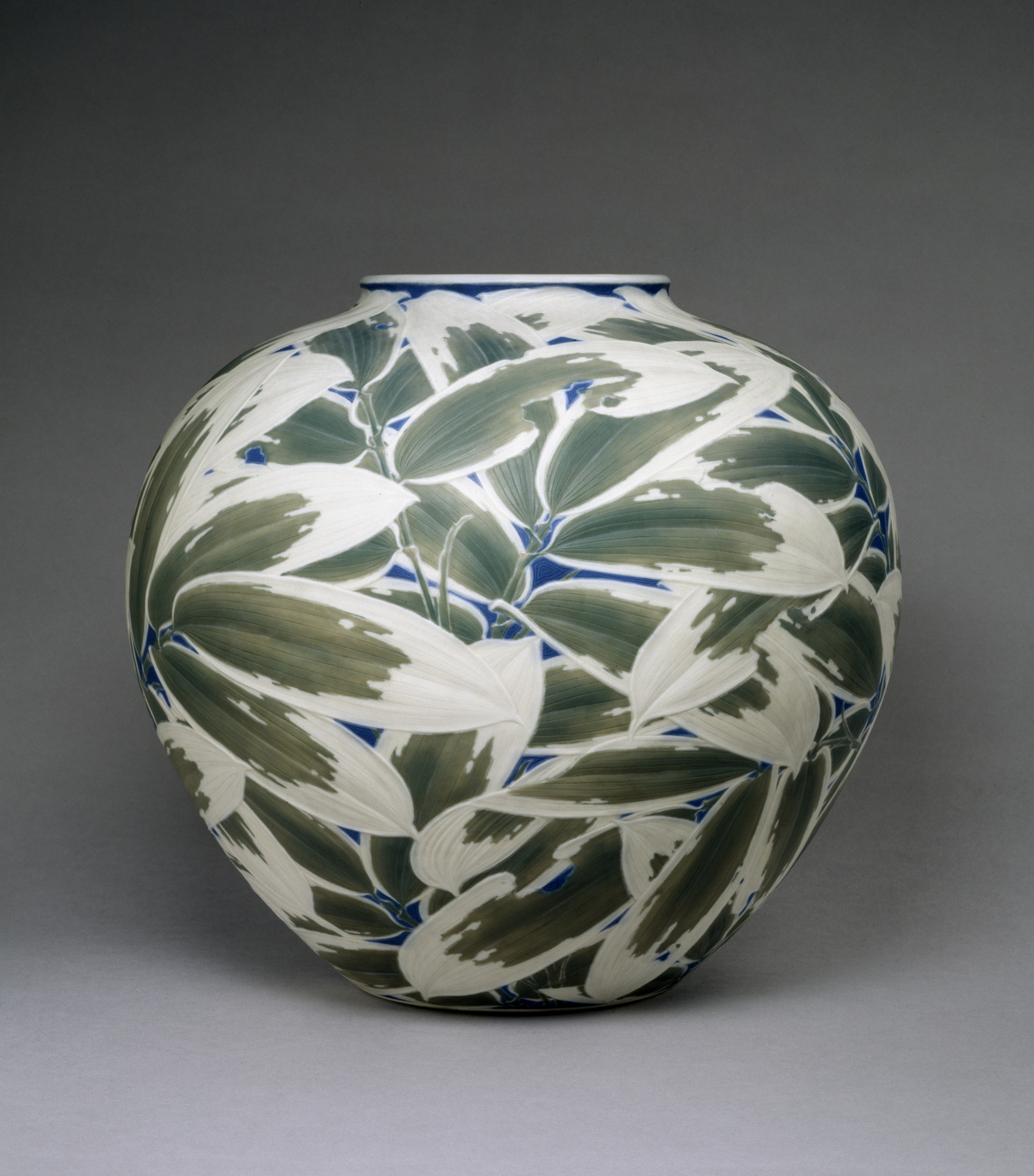Vase with Low-Relief Decoration of Bamboo Leaves
(Japan and Korea )
Potter Itaya Hazan was fascinated by light and obsessed by its diffusion on ceramic forms. With this vase, Hazan introduced to the international art world a new technique that he invented called saiji. Saiji is a form of underglazing that uses matte colored glazes. The results are brilliant colors with an eggshell-like finish. The green of the bamboo leaves and the small blue patches between them have a richness that comes from saiji staining the porcelain clay. The white leaf tips show the color of the unstained porcelain.
Inscription
Provenance
Provenance (from the French provenir, 'to come from/forth') is the chronology of the ownership, custody, or location of a historical object. Learn more about provenance at the Walters.
The Panama-Pacific International Exposition, San Francisco, 1915; purchased by Henry Walters, Baltimore, 1915; by bequest to Walters Art Museum, 1931.
Exhibitions
| 2023-2024 | Meiji Modern. Asia Society, New York; The David and Alfred Smart Museum of Art, Chicago; The Museum of Fine Arts, Houston, Houston. |
| 2012-2014 | Inventing the Modern World: Decorative Arts at World's Fairs, 1851-1939. The Nelson-Atkins Museum of Art, Kansas City; Carnegie Museum of Art, Pittsburgh; New Orleans Museum of Art, New Orleans; Mint Museum of Art Uptown, Charlotte. |
| 1995 | Itaya Hazan. National Museum of Modern Art, Crafts Gallery, Tokyo; Museum of Oriental Ceramics, Osaka; MOA Museum of Art, Atami City; Mie Prefectural Museum of Art, Tsu; Fukushima Prefectural Museum of Art, Fukushima City. |
| 1984 | Master Potters of Japan. The Walters Art Gallery, Baltimore. |
Conservation
| Date | Description | Narrative |
|---|---|---|
| 3/21/1984 | Treatment | cleaned |
| 2/21/2012 | Treatment | Examined for loan; technical study; cleaned |
| 2/21/2012 | Treatment | The jar was shown at the Panama-Pacific International Exposition, San Francisco, 1915. Maker Itaya Hazan, acknowledged as Japan's first studio potter, was innovative in his surface decoration. The relief surface decoration is mold made; a mold line is present around the belly of the jar. The lines appear to be incised while the porcelain was leather hard. The colors were applied. The overall surface was then glazed with a thick translucent matte glaze that was intentionally applied or brushed and dripped to be thicker and thinner in artist selected areas. |
Geographies
Japan, Tokyo (Place of Origin)
Measurements
H with base: 17 3/16 in. (43.6 cm); Vase: H: 14 3/4 x Diam: 16 1/8 in. (37.5 x 40.9 cm); Wooden base: H: 2 5/8 x Diam: 10 1/8 in. (6.6 x 25.7 cm)
Credit Line
Acquired by Henry Walters, 1915
Accession Number
In libraries, galleries, museums, and archives, an accession number is a unique identifier assigned to each object in the collection.
In libraries, galleries, museums, and archives, an accession number is a unique identifier assigned to each object in the collection.
49.2281


